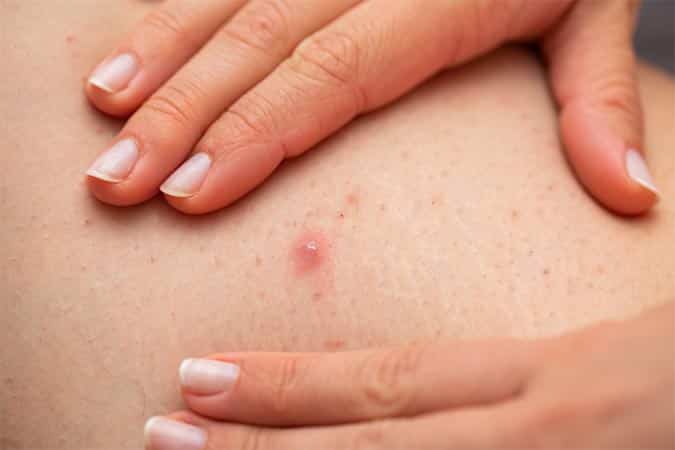What is Folliculitis?
Folliculitis is a skin condition in which hair follicles become inflamed and/or infected, and is commonly caused by a fungal or bacterial infection. This condition may first appear as small red bumps or white-headed pimples around hair follicles but can spread into non-healing or crusty sores. While folliculitis is not life-threatening, it can be uncomfortable, unsightly, sore, and itchy. Severe infections may lead to hair loss and scarring.
Signs and symptoms of folliculitis include:
- Blisters that are pus-filled may break open
- Clusters of small red bumps or white-headed pimples grow around hair follicles.
- Burning, itchy skin.
- Tender or painful skin.
- A swollen bump or mass.
There are also different forms of folliculitis, including superficial and deep folliculitis. Superficial forms involve part of the hair follicle, while deep forms involve the entire hair follicle.
While anyone can develop this condition, certain factors may put you at a higher risk, including having a medical condition that hinders your immune system, taking certain medications, regularly wearing clothing that traps heat and sweat, or soaking in hot tubs that are not well maintained.
Who is a Good Candidate for Folliculitis Treatment?
If you are experiencing any of the symptoms above, or if your signs and symptoms do not go away after a few days, contact our office today to schedule a consultation. Please contact our office today to get started!
What to Expect During Folliculitis Treatment?
Treatment options will depend on the severity of your condition, and which treatment options you have already tried. Common treatments include:
Creams or pills for infection: For cases of mild infections, an antibiotic cream or lotion may be prescribed. Oral antibiotics used to treat folliculitis that is more widespread and may be used for severe or recurrent infections.
Creams or pills for fungal infections: These medications are used to treat infections caused by fungus or yeast.
Creams or pills for inflammation: A steroid cream or anti-inflammatory pill may be used to ease itching in the case of eosinophilic folliculitis.
Minor surgery: For patients with a large boil, your dermatologist may create a small incision to drain the pus. This can relieve discomfort and speed up recovery.
Laser hair removal: If other treatment options do not work, long-term hair removal with the GentleLase Pro laser therapy may help to clear up the infection.
Folliculitis FAQs
Can folliculitis cause bald spots?
Can folliculitis be caused by stress?
Can certain foods cause folliculitis?
Can folliculitis make you feel unwell?
How do you get rid of folliculitis?
Following Folliculitis Treatment
Following treatment, patients will notice an improvement in their symptoms and a clearing up of their infection. Be sure to follow your dermatologist’s specific instructions on how to care for your skin post-treatment.
In order to prevent folliculitis in the future, we recommend these tips:
- Avoid wearing tight clothing.
- Avoid shaving, if possible, or shave with care.
- Only use clean hot tubs and clean heated pools.
- If you wear rubber gloves frequently due to your profession, dry out your hands and gloves between uses.
Schedule a Consultation
To learn more about folliculitis treatment at HMGS Dermatology, contact our office today! We will be happy to help you schedule your consultation appointment with one of our skilled dermatologists or physician assistants.

Get Started With A Visit!
Fill out the form below and we will reach out to you shortly to schedule an appointment.